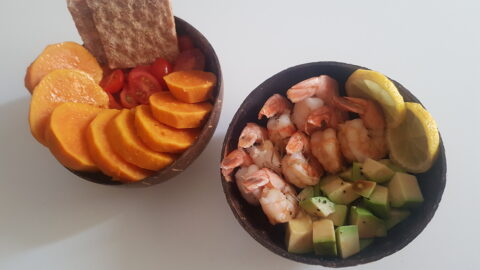The days of fasting in the orthodox tradition are calculated on the 180-200 days per year, while the duration ranges from 1 day to 7 weeks.
But is this food delivery, which has its roots at least 1700 years ago, a habit that can benefit our health – and what are the points where we should be looking at?
One of the features of the traditional cretan diet is the observance of lent by the Christian Church throughout the course of the year, leaving minimal finally days "catalysis of everything". Fasted, so they didn't eat "ler(c)the right", as we say in Crete, non-fasting foods, around 200 days every year!
The traditional dishes of Crete are mainly based on materials "in an immanent way," and it means seasonality. The meatless dishes so they could not be ignorant of the local seasonal ingredients. So this time, dominate at the table of our vegetables and herbs, kosher seafood, boiled (snails), and pasta, handmade or trade and a lot of cooked scones.Regardless of the view that everybody has for the religious imposition of fasting, today everyone agrees that the abstinence from animal food, for some intervals, it works like a "rehab" for the human body and has multiple benefits for our health.
The benefits to our health
People who fast systematically seems to generally follow a more high-quality diet, as dietary habits are closer to the mediterranean model. So, if you fast regularly, you probably follow more faithfully the Mediterranean diet.
57% less likely to follow a generally healthy diet is young people who report that they adopt habits of fasting.
7th country in the world in meat consumption has managed to Greece, with a per capita consumption of about 100 kg per year.
Therefore, fasting is a good opportunity to back the measure.
In general, adults who fast show a more favorable blood lipid profile, likely due to consumption of better quality fats.
So, at the end of a fasting, total and "bad" cholesterol may present a reduction of 12.5% and 15.9%, respectively, while the weight can be reduced by 1 kg, without making any other change.
Finally, a diet that is so close to the mediterranean model, and is characterized by increased consumption of products of plant origin, is rich in antioxidants, and can display and anti-inflammatory action – features that are wealth for the protection of our health from chronic diseases and ensure the well-being.
Practical tips:
• Proteins
Most plant foods (except fruits) are sources of protein such as e.g. legumes (lentils, chickpeas beans), peas, nuts (almonds, hazelnuts, walnuts, peanuts, sesame seeds, etc.), but also cereals. However, to get proteins with a complete amino acid profile, try combinations such as: lentils, bean rice, peas with rice (ie a combination of legumes with cereals), risotto with sesame, soy milk with breakfast cereals.
• Calcium
Calcium intake has, rightly, been linked to dairy products. However, foods of plant origin that are good sources of calcium are e.g. cabbage, Chinese cabbage, almonds and sesame seeds… while if you are exposed to the sun and give your skin the opportunity to synthesize vitamin D, the absorption of calcium can be enhanced. However, vegetables such as spinach or beetroot, which are high in oxalates, can reduce calcium absorption:
1. With cooking, some of the oxalic acids are removed and calcium can be better absorbed by the body.
2. Avoid eating calcium-rich foods with alcohol or coffee at the same time.
3. Iron
Iron can be found in legumes (lentils, chickpeas, beans), nuts (eg cashews, almonds, peanuts), vegetables (eg spinach, broccoli, beetroot leaves) and fortified foods (e.g. x. breakfast cereals). But how do you maximize the absorption of plant-based iron and avoid fatigue or weakness?
Vitamin C, which is found in abundance in citrus fruits (orange, tangerine, lemon) and peppers, when consumed at the same time with foods containing iron, helps catalyze its better absorption.
The β-carotene contained in carrots or apricots also helps in better absorption of iron.
Avoid eating iron-rich foods in combination with coffee, tea or cocoa, as tannins significantly reduce iron absorption.
Soak food before cooking, thus reducing the activity of certain phytic acids that can reduce iron absorption.
Some more tips…
Since through fasting you managed to get closer to the Mediterranean model… why not add some more changes that will take off your diet?
• Use herbs and spices to give your food a great taste… so you may find salt unnecessary.
• Eat at least 2-3 fruits daily and accompany your lunch and dinner with a nice salad.
• Increase your fish / mollusk consumption to more than 2 times a week as well as legume consumption.
• Consume 1-2 small handfuls of nuts daily.
• Prefer whole grain products and include them daily in your diet
• Enjoy sweets (always in moderation) such as e.g. spoon sweets or halva (since it is the top dessert of this period), thus avoiding saturated fats.
• Do not forget the physical activity… which should be an integral part of our daily life.
Undoubtedly, fasting during Lent can contribute to our better physical and mental health. Especially when done with the right food combinations and for a short time it can be a real detox for the body.
However, attention should be paid to people who have a health problem, especially people with anemia, problems with the cardiovascular system, osteoporosis, high cholesterol or uric acid, kidney patients, where they should consult their doctor and dietitian.
Remember that strict fasting is not recommended for children because they are in development and several foods in our diet, including dairy products and meat, are essential for their nutrition.

